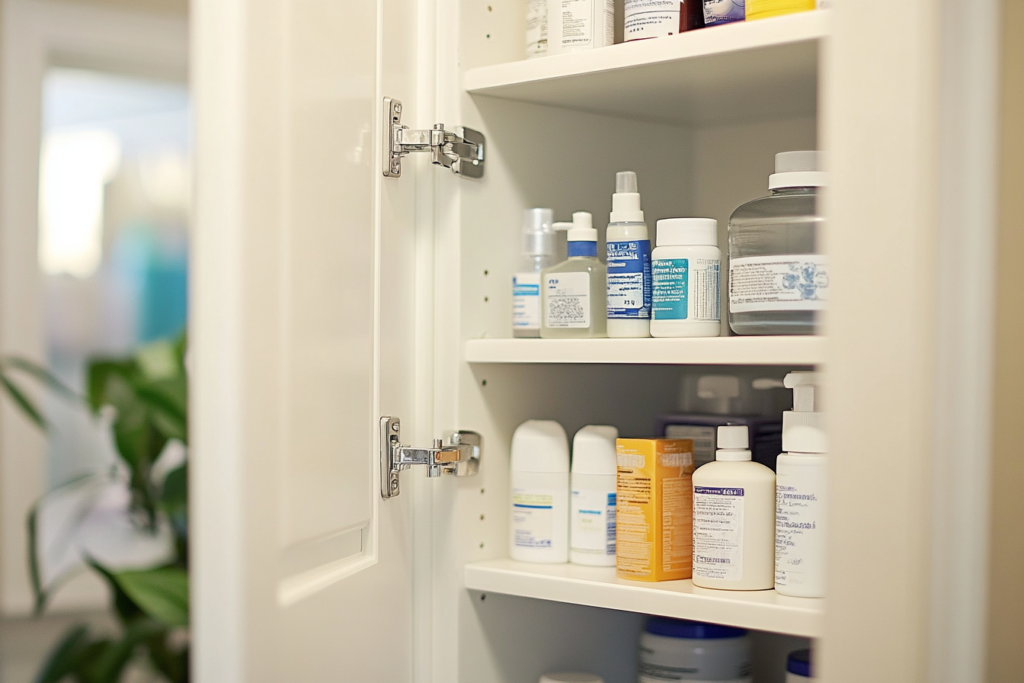Parents know the importance of childproofing their homes, but even the most vigilant among us can overlook common household items that pose serious risks to children. While we often secure cabinets and cover electrical outlets, there’s one category of items that demands extra attention: medications. From prescription drugs to over-the-counter supplements, these seemingly innocent items are actually the leading cause of child poisoning incidents.
Proper storage techniques for medicine cabinets

Installing a high-quality cabinet lock is your first line of defense. Position medications in upper cabinets, ideally at least five feet from the ground. Remember that child-resistant doesn’t mean childproof – determined little ones can sometimes figure out these safety mechanisms.
Keep medications in their original containers with safety caps tightly secured. Remove any expired medications through proper disposal methods. Consider using a dedicated lockbox for storing prescriptions, especially those that are particularly dangerous if ingested.
Hidden dangers in personal care items
Beyond obvious medications, many personal care products contain potentially harmful ingredients. Mouthwash often contains high alcohol content, while essential oils can be toxic if swallowed. Even common items like hand sanitizer pose risks due to their high alcohol concentration.
Store these items alongside medications in locked, elevated cabinets. Pay special attention to products that might look appealing to children, such as brightly colored bath products or scented items. What if that sweet-smelling lotion became a tempting snack for a curious toddler?
Smart storage solutions for everyday items

Consider investing in childproof latches for all bathroom storage areas. Create designated “safe zones” where children can access their own appropriate personal care items, like their toothbrush and mild soap, while keeping dangerous items secured elsewhere.
Organize items by risk level, keeping the most dangerous products in the highest, most secure locations. Regular safety audits of your storage spaces can help identify potential risks before they become problems.
Maintaining safety during daily routines
Develop a habit of returning medications and dangerous items to their secure locations immediately after use. This simple step prevents accidental access during busy morning routines or hectic evenings.
When guests visit, remind them to keep their bags and medications out of children’s reach. Many incidents occur when children access items from visitors’ purses or overnight bags.
Emergency preparedness and response

Post emergency numbers, including Poison Control (1-800-222-1222), in easily visible locations. Keep a record of all medications in your home, including dosages, to provide accurate information in case of accidental ingestion.
Install a home monitoring system or door alert system to notify you when medicine cabinets or storage areas are accessed. These simple devices can provide crucial early warning of potential dangers.
Creating a safe environment requires constant vigilance, but the peace of mind is worth the effort. Regular safety checks, proper storage solutions, and consistent habits form the foundation of a secure home. Remember that even brief moments of inattention can lead to serious consequences when it comes to medications and harmful substances.
